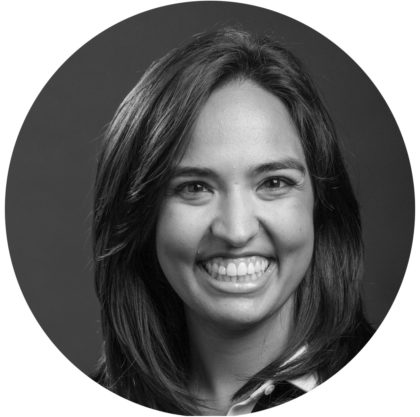Supported By


Dr. Chadha is an Assistant Professor of Ophthalmology and the Associate Director of Medical Student Education for the Department of Ophthalmology at the Icahn School of Medicine at Mount Sinai. She is also an Attending in the Glaucoma Clinic of the New York Eye and Ear Infirmary.
Please share with us your background.
I grew up in the suburbs of Washington, DC. My father is an internist there, and I was inspired by him to pursue medicine at an early age. I earned my bachelor’s and medical degrees from the George Washington University (GWU) as part of a 7-year BS/MD program. I stayed at GWU for residency and then pursued a glaucoma fellowship at Yale.
What drew you to ophthalmology and, specifically, to your field of interest?
I always knew I wanted to be in a field that combined clinical work with procedures. Initially, I thought I would pursue OB/GYN. I later had the good fortune of stumbling upon ophthalmology as a third-year medical student, and I was drawn to this amazing field combining patient care with microsurgery. Of course, I also found the ability to preserve and restore vision very rewarding.
Please describe your current position.
In a typical week, I see patients in my private practice, perform surgery, and teach medical students, residents, and fellows. At the Mount Sinai faculty practice, I see a mix of comprehensive/cataract and glaucoma patients and enjoy this variety. As a medical student educator, I have a particular focus on medical student education and enjoy training both those interested in ophthalmology and those pursuing other fields of medicine, as it is important for all physicians to have a basic understanding of our field.
Who are your mentors?
I have been fortunate to train with many inspiring physicians during my career—there are too many to list! Two mentors I would like to highlight are James Tsai, MD, MBA, and Christopher Teng, MD, with whom I had the privilege of training as part of my fellowship. Not only did they provide me with great training, but they continue to help guide me in my career development. It has also been a pleasure to work with Janet Serle, MD, who is part of our practice. She has been an inspirational female physician role model and a great supporter early in my career.
What has been the most memorable experience of your career thus far?
Patient reactions after successful cataract surgery never cease to be rewarding and memorable. Glaucoma cases, however, can be more challenging. While prevention and early detection are key in glaucoma management, we, of course, see patients who present with more advanced disease and cannot be helped, despite our best efforts. I recently saw a monocular 50-year-old woman who initially presented to me with uncontrolled severe chronic angle-closure glaucoma and hand motion vision in her good eye. I performed combined cataract and tube shunt surgery but advised her that she was unlikely to regain vision, given her advanced glaucoma. However, postoperatively, her vision improved to 20/50 with good IOP control! I did not anticipate this level of visual recovery, given her advanced disease, but cases like these keep me motived and hopeful in my care of glaucoma patients.
What are some new technological advances that you have found particularly exciting? Which advances in the pipeline are you most enthusiastic or curious about?
As a glaucoma specialist, the MIGS explosion has been very exciting. I’m happy to have new options for my patients that offer quicker recovery and a more optimal safety profile. It is also nice that many of these technologies can be combined with cataract surgery so that I can offer my patients enhanced IOP reduction while improving their vision. I think the challenge is determining which patients are good candidates for which procedures, given that there are so many options, and understanding that these procedures cannot replace traditional glaucoma surgery.
What is the focus of some of your research?
My research focuses on MIGS and medical education. As mentioned above, the current challenge with MIGS is determining which patients the devices work best in, so I try to focus my research on evaluating the efficacy of MIGS in certain scenarios. I am particularly interested in the Kahook Dual Blade (New World Medical), as this device can be used with or without cataract surgery. My medical education research focuses on curriculum development and integrating new technology into trainee education.
What is a typical day in your life? What keeps you busy, fulfilled, and passionate?
For me, the balance of clinical work, education, and service helps me sustain passion in my work. It’s rewarding and fun to teach, and I learn a great deal from our trainees. I staff a free ophthalmology clinic run by our medical students, which is a wonderful way to teach and to provide service to underserved patients. I also serve as volunteer for EyeCare America, which provides eye exams to individuals over 65 at no out-of-pocket cost to the patient. Of course, work-life balance is important, and outside of work I enjoy traveling and have become quite a foodie while living in NYC.
What advice can you offer to individuals who are just now choosing their career paths after finishing residency or fellowship?
Something I realized early in my practice is that you don’t know everything coming out of training because medicine and ophthalmology continue to expand. There are always new techniques coming out that may not have been available at the time of one’s training, so lifelong learning is important. It’s challenging to adopt new techniques when you’re in practice, but it’s important to identify mentors who can help you continue to grow.
Tell us about an innovative procedure you are performing or a new imaging/diagnostic tool that has improved your practice.
As mentioned earlier, I have found Kahook Dual Blade goniotomy to be a useful MIGS approach. I like the idea of harnessing a patient’s own anatomy to improve IOP. It’s also advantageous that it can be performed in both phakic and pseudophakic eyes.



